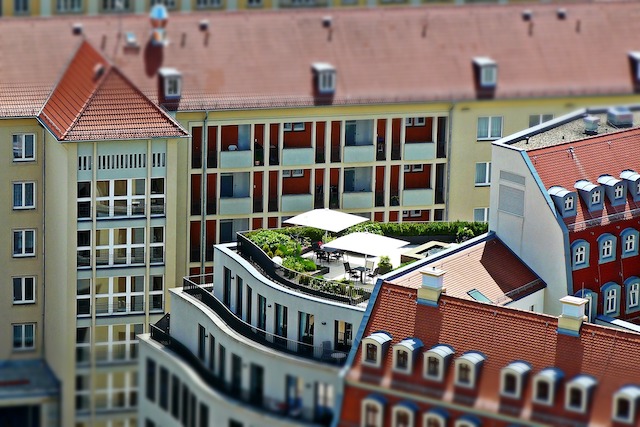
Many people dream of having a huge backyard that could be a generously sized garden, which isn’t a real possibility for some urban residents.
Real estate owners are becoming creative with regards to outdoor spaces. They are searching for unused rooftops, which make lots of fresh breeze and sunshine. If you dream of getting your homegrown salads and bright blossoms, then you might want to begin budgeting for your own sky-high garden space.
As the urban dwellers reside in a restricted distance, the roof garden is a delight for them. These let one enlarge the length and possess an artful turf. You may have started taking into consideration the price tag. Don’t be afraid! It is possible to build a roof garden for low cost. Read to learn how:
1. Understanding the regional regulations
Before you commit to making a roof garden, find the local rules. Maybe it is illegal in the area, or you may need a permit for this. Mainly, there might be rules and regulations of the homeowner’s association. Clear all these before you invest your time and effort and cash.
2. Look at the Structural Reinforcement
Perhaps you’ve discovered nightmare-inducing stories which have scared away you out of building a rooftop garden–roofs falling under the burden of soil, water damage brought by planting, etc.
To avoid such kind of issues, you must hire a Roofing Contractors to explain the relevant details about your specific roof. If you are leasing, ensure your landlord consents to the project! A specialist will explain to you just how to mitigate problems (as an instance, by moving the positioning of one’s intended garden) and certainly will assess your roof may adapt the level of support and also waterproof-ness required to get a rooftop garden. This one-time expense pays back plenty of money.
3. Choose the Plants Wisely
The research will direct you toward the ideal plant collection to the rooftop garden. Consider the total amount of sun your rooftop receives (tomatoes, as an instance, want lots of sunshine every single day) and the thickness of one’s planters (root veggies such as carrots and radishes need a great deal of deep soil to cultivate). Breeze and humidity may play a part in your success with certain plant types. Broadly, herbs, peas, beans, kale, spinach, and lettuces tend to do the job well in many rooftop gardens.
Purchasing the dry spell and warmth tolerant plants makes a rooftop glasshouse more cost-effective. Being less delicate, such plants have better odds of survival. Plant fancy bushes and stay away from enormous trees. They put much burden on the rooftop and furthermore leave little space for improvement.
4. Try Using Domestic Plants
Indoor plants are better in numerous ways. These are incredible for the newbie gardeners as they are anything but difficult to keep up. They can grow pleasantly and remain for long. In this way, you will have fewer substitutions. The local blossoms sprout synchronizing with the nearby conditions and are smarter to withstand climatic changes.
5. Create Your Own Steppingstones Path
If you have more space, then you can create a way at that point which makes the garden more sensational. These should be possible effectively. You can get a vast range of colorful stones or pebbles from the market. Get some of them and create your pattern and design. This will make a pleasant steppingstone in the rooftop garden.
6. Build Your Planter
A DIY planter can spare you much expense. There are a few alternatives to do this. You can utilize nearly anything for this from kiddy pools to old tubs. Making planter by using wood. Wooden beds can likewise make an amusing flower bed in your rooftop garden. Slice it into a few sections to make the planter all the more appealing.
7. Consider Creating A Caged Garden
Repurposing a birdcage additionally makes a beautiful garden feel. Get an old birdcage from the flea market and paint it. Fill the base with soil and pot a few plants. This will be a decent expansion to the rooftop garden. You may likewise hang a few cages for getting a feel for a hanging garden.
To keep your plants from toppling over in the breeze, introduce a few windbreaks. A trellis is a decent choice, as it separates the breeze while as yet giving it a chance to go through. Deciding a solid windbreak won’t get you far—the speedy wind will presumably knock or break it over in a flash.
8. Quality and Quantity of Soil
Soil is the crucial element of your rooftop garden. Soil needs to strike the ideal equalization of penetrability and water maintenance. Size of soil grain, pH level, supplements, and thickness are a couple of different elements to consider. Search for soil that is explicitly intended to be utilized for green rooftops: Green rooftop soil is lightweight, putting very less weight on the rooftop structure.
The amount of soil that you will need will rely upon the size of your rooftop garden. You regularly need at least 8 to 10 inches of depth, and the length and width will be set on to some extent by the space accessible to you. Note that the careful expense of the Soil will fluctuate from area to area.
Conclusion
A rooftop garden can reduce rooftop maintenance cost. It likewise conveys a spot to relax. The above thoughts are practical and can be actualized effectively. Attempt these in your urban home. You will get a lovely rooftop garden that will be your pride and the neighbors’ jealousy.

Author Bio: With a passion for home Interior & exterior that stems over two decades, Emily has become an esteemed author. Throughout her life, Emily has studied the Interior design from “ANDREWS UNIVERSITY” and worked around the world to explore new home designed those are easy to structure and show their unique styles. Her goal is to explore new home designs and provide people with the ultimate architecture. By sharing her knowledge with Skywalker Roofing, Emily has helped and continues to help people to get better home designs ever.
